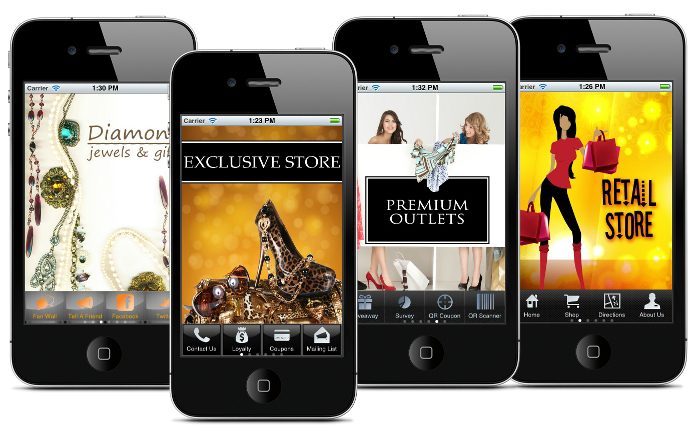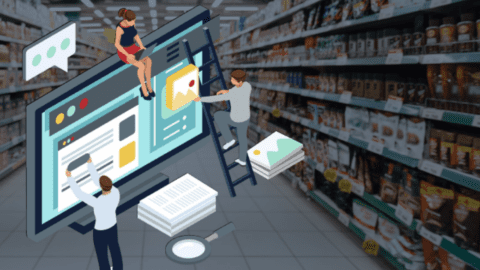Mobile has made an undeniable impact on consumers’ shopping habits, particularly their interactions with the store. To measure up to consumers’ heightened standards and expectations, retailers need to design mobile apps that are equally engaging and easy-to-use, helping to streamline the overall purchase process.
When it comes to mobile app quality, even top retailers lag behind other industries, according to data from Applause Analytics. ARC — the Application Resource Center for Applause — released the report, titled: The Best And Worst Rated Retail Apps, to help retail brands understand how U.S. consumers rate the most popular retail apps. In total, 95 apps qualified for the company’s Applause Retail App Quality Index, which include apps that have more than 200 app store ratings and reviews.
Apps were ranked based on Applause Scores, which are represented by a numerical value on a scale of 0 to 100 (best-in-class), based on user reviews across 10 standard attributes. The attributes include content, elegance, interoperability, performance, pricing, privacy, satisfaction, security, stability and usability.
Advertisement
The 95 most-reviewed retail apps averaged a 43 Applause Score for app quality, which is 24 points lower than the 67 average score of the 30 million mobile apps across all industries in the Android and iOS app stores. In fact, only seven of the 95 retailers earned average app quality scores of 67 or greater with more than 4,000 user reviews. They include:
-
Fanatics (92);
-
Domino’s Pizza (85);
-
Groupon (82);
-
HauteLook (69);
-
Overstock.com (68);
-
REI (68); and
-
CVS Health (67).
Ben Gray, a Digital Experience Analyst at Applause, and the author of the report, said that these seven mobile apps differentiate because they do three things well: Deliver on high expectations; curate a passionate fan base; and serve the customer in the mobile moment.
“Let’s face it, consumers have incredibly lofty expectations of their digital experiences,” Gray said. “That translates to mobile apps, as well. They’re also incredibly passionate and they want to conduct these transactions quickly. For example, if you get hungry and you want to order out, who are you going to choose between, a quick service restaurant just down the block or a quick service restaurant that has a mobile app that can deliver to my door? In the case of Domino’s, you don’t just construct your pizza, but you can observe the status of the creation of that pizza and ultimately deliver it to your door in a seamless, intuitive experience.”
Testing plays a critical role in ensuring that the app performs in the real world just as it would in a lab, according to Gray. Rigorous testing has to be an imperative for retailers looking to ensure their app performs quickly, is responsive and handles heavy traffic.
Without proper testing, apps are bound to suffer, with consumers being the first ones to inform developers of the technology’s true flaws. These reviews can reflect the level of the mobile experience, and can help retailers make appropriate comparisons to their other channels.
The following six brands received more than 1,000 reviews and received average app quality scores of 25 or less:
-
Old Navy (25);
-
Macy’s (25);
-
Burger King (25);
-
Jimmy John’s (19);
-
Michaels (19); and
-
McDonald’s (12).
Three of the six brands are quick service restaurants (QSRs), showing that these companies must do more than rely on their name brand to build an effective mobile experience.
“You’ll find that these QSR brands are still in the relatively early stages of defining their mobile strategies,” Gray said in an interview with Retail TouchPoints. “You’ll find that they’ve been slow to launch apps initially and are slow to update their apps. That said, they realize the opportunity that’s ahead of them in terms of delighting customers and increasing revenue. We’re seeing a lot of these QSRs now exploring sharing economy partnerships. They’re forced to innovate because they’re facing such disruptive, emerging vendors such as Five Guys, In-N-Out Burger and Taco Bell.”
Taco Bell is the primary example of a QSR that has bolstered its mobile app since ARC released its inaugural retail app study last year, improving its score from 38 points to 58. Perhaps the biggest catalyst of this jump was the company’s introduction of iPhone ordering on Oct. 27, 2014. With the feature, consumers can use their app to pre-order food, and then skip the line to pick up their items.









